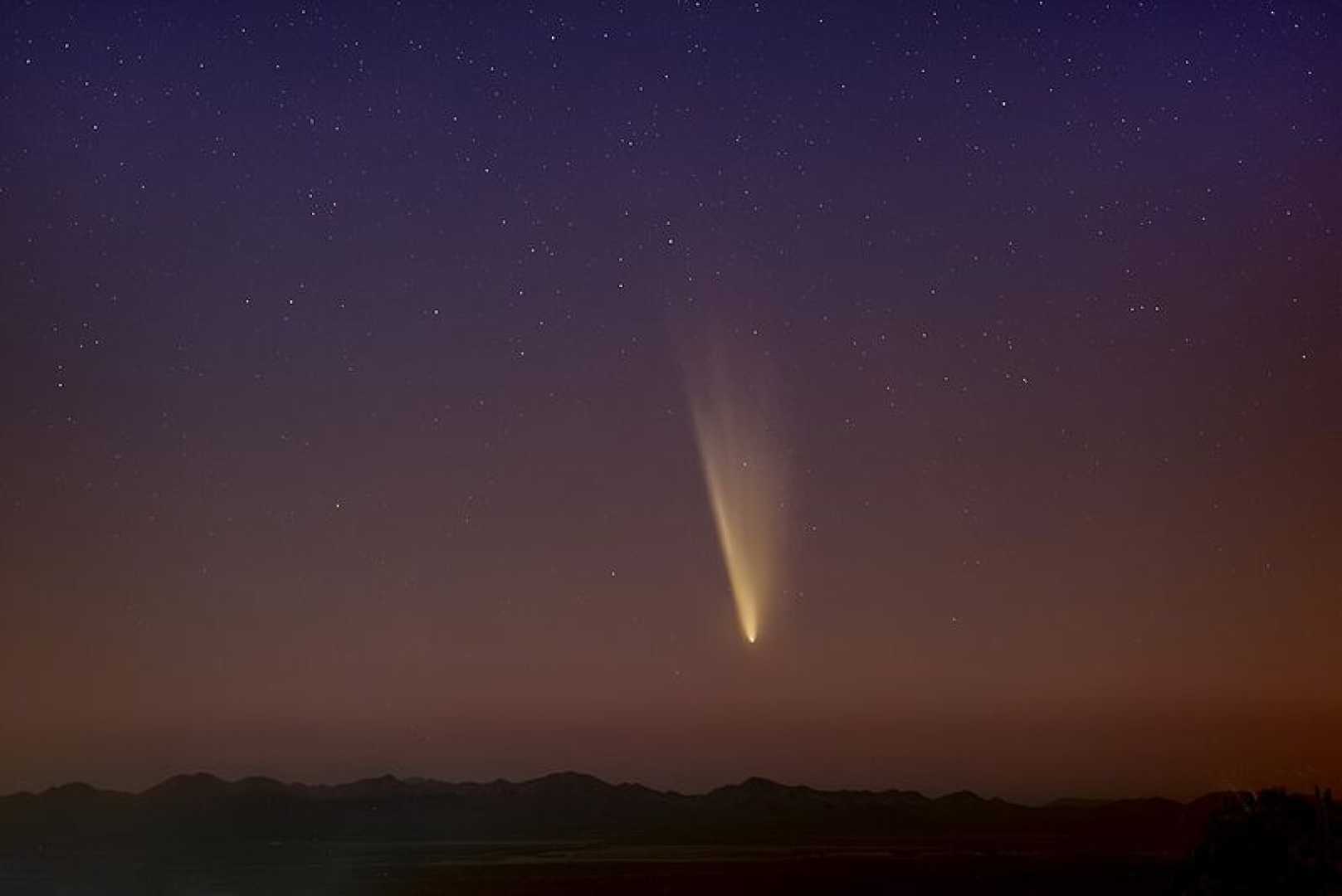World
Rare Comet Visible for First Time in 160,000 Years

LONDON, U.K. — A rare comet, Comet C/2024 G3 (Atlas), is set to become visible in the night sky for the first time in 160,000 years. The comet, discovered last year by NASA‘s Asteroid Terrestrial-impact Last Alert System (ATLAS), reached perihelion—its closest point to the Sun—on Monday, potentially making it bright enough to be seen with the naked eye.
Dr. Shyam Balaji, a researcher in astroparticle physics and cosmology at King’s College London, explained that the comet will pass approximately 8.3 million miles from the Sun, classifying it as a “sun-skirting” comet. “Current orbital calculations indicate it will pass about 8.3 million miles from the Sun,” he said. “Opportunities to spot the comet may occur in the days around perihelion, depending on local conditions and the comet’s behavior.”
While the comet’s brightness is notoriously difficult to predict, experts believe it could shine as brightly as Venus. The southern hemisphere is expected to offer the best viewing conditions, with observers advised to look toward the eastern horizon before sunrise or the western horizon after sunset. However, visibility in the northern hemisphere, including the U.K., may be limited due to the comet’s proximity to the Sun.
Dr. Balaji cautioned that while the comet is expected to be “quite bright,” predictions about its brightness remain uncertain. “As with all comets, its visibility and brightness can be unpredictable,” he said. Observers are encouraged to find a location away from light pollution and use binoculars or a small telescope for the best chance of spotting the comet.
NASA astronaut Don Pettit shared a photograph of the comet taken from the International Space Station on Saturday, describing it as “totally amazing.” The comet’s journey has also been tracked by astronomers worldwide, with recent observations suggesting a sudden increase in brightness on Jan. 2, 2025. However, experts remain divided on whether this indicates the comet’s potential disintegration or a temporary surge in activity.
Daniel Green of the Central Bureau for Astronomical Telegrams in Cambridge, Massachusetts, predicts the comet could reach a maximum magnitude of -3.2, making it as bright as Venus. However, its close proximity to the Sun may make it challenging to observe. “It’s really hard to call these comets when close to the sun like this, in terms of visibility,” Green said.
For those hoping to catch a glimpse, the best viewing window in the northern hemisphere is expected between Jan. 12 and 14. Observers should look toward the east-southeast horizon before sunrise or the west-southwest horizon after sunset. A clear, unobstructed view and binoculars are recommended for the best chance of spotting the comet.
Astronomers also warn against attempting to view the comet during daylight hours due to the risk of eye damage from the Sun. Instead, they recommend following updates from NASA’s Solar and Heliospheric Observatory (SOHO), which will capture the comet’s close approach to the Sun.












